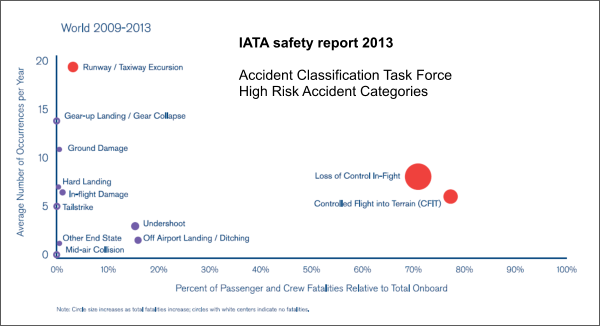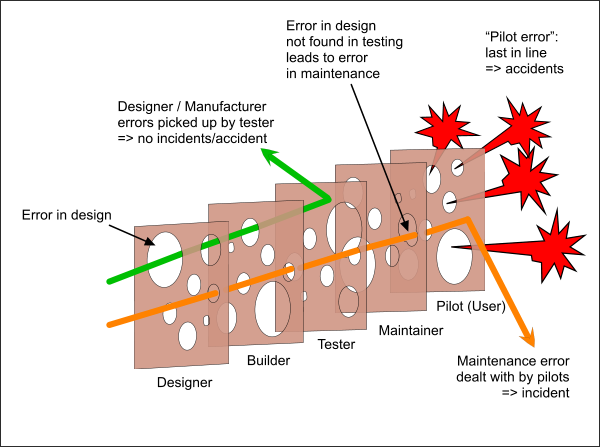Unfortunately, there is an element of truth in the public perception.
Many of the worst accidents are indeed the product of "errors" made in the cockpit. But overall responsibility for this is a collective error, not (usually) that of the specific individuals involved.
The IATA chart below illustrates how the two highest risk accident types involve matters that it should be within the collective ability of the pilot community to reduce - CFIT and loss of control.

The pilots' role in the overall process can be shown in the following variant on James Reason's well known "Swiss cheese slices" model of safety systems. In this illustration, the "holes" represent errors or failures by individuals in at different stages of the process which eventually produces a single flight. In some cases successive failures occur but are usually caught by the next stage of the process.

The submerged part of the iceberg shown earlier represents earlier failures or mistakes that have been "caught" by pilots. The actual actions taken by the pilots involved may never have been previously anticipated and the event itself will often result in remedial action (e.g. modifications, service bulletins or other changes) being taken "upstream" to prevent a recurrence.
However, the pilot "users" are the last line of defence. There is no-one "downstream" of them to catch errors introduced by pilots themselves. So the responsibility for eliminating these errors rests with the pilot community as a whole, which must set up modern and effective systems to deal with them.
The information on this website is provided to illustrate how a simple change to routine SOPs could dramatically affect this situation, by providing better defences against the most common types of pilot errors. Its main sections are on why this will reduce accidents due to inadequate approach management, ineffective cross-crew monitoring, and difficulties in transition from instrument to visual flight.
The "implementing PicMA" pages show that only a few changes to procedures are needed to bring this safety improvement about.